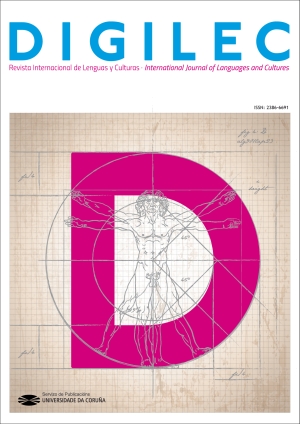Miss Jane and Miss Eyre: From student to teacher in Jane Eyre
Contenu de l'article principal
Résumé
Jane Eyre is considered to be one of the most significant Victorian novels within the English literary canon as well as a governess novel. However, apart from her experience as governess, it must not be forgotten that, first of all, Jane was a student. Education has shaped the protagonist’s life and the plot of the novel making it one of the main topics of Jane Eyre and other Charlotte Brontë’s literary works such as The Professor (1857) and Villette (1853). The main aim of this essay is to study how education has shaped Jane Eyre both as a student and a teacher and how it has affected the outcome of the novel. In order to do so, a close reading of the novel is carried out along with a sociocultural background of Victorian society.
Téléchargements
Détails de l'article
Références
Alton, A. H. (1995). Teaching Women: Teacher and Taught in the Novels of Anne Brontë and Charlotte Brontë. Ontario: National Library of Canada.
Alqahtani, O. (2018). The Importance of the Absent Mother and Orphanhood in Emily Brontë’s Wuthering Heights and Charlotte Brontë’s Jane Eyre. Ann Arbor: ProQuest LLC.
Brontë, C. (1989). The Professor. 1857. London: Penguin Books.
Brontë, C. (1994). Jane Eyre. 1847. London: Penguin Books.
Brontë, C. (2004). Villette. 1853. London: Penguin Classics.
Craina, V. (2015). What Jane Eyre Taught: the “Autobiographer” in Jane Eyre and Women’s Education. B.A.S., 21, 39-47.
Davis, N. L. (2009). “Clearing the Sill of the World”: Jane Eyre and the Power of Education in the Nineteenth-Century Novel. Forum on Public Policy Online, 2, 1-13.
Edgeworth, M. (2008). The Good French Governess. London: Dodo Press.
Godfrey, E. (2005). “Jane Eyre”, from Governess to Girl Bride. SEL, 45 (4), 853-871.
Gruener, E. E. (2016). Jane Eyre and Education. The Cupola Scholarship at Gettysburg College. Student Publications 473. https://cupola.gettysburg.edu/student_scholarship/473/
Hampe, M. (2016). “To Grow Up Clean”: Jane Eyre and Education. Ann Arbor: ProQuest LLC.
H.S., S. (2010). Anecdotes of Mary; or, the Good Governess. Michigan: Gale Ecco, 2010.
Hughes, Kathryn. (2001). The Victorian Governess. London: Hambledon Continuum.
Hughes, Kathryn. (2014) The Figure of the Governess. The British Library. https://www.bl.uk/romantics-and-victorians/articles/the-figure-of-the-governess. Retrieved: 28/10/2020.
Nestor, P. (1985). Female Friendships and Communities: Charlotte Brontë, George Elliot, Elizabeth Gaskell. Oxford: OUP.
Rogers, R. (1995). Boarding Schools, Women Teachers, and Domesticity: Reforming Girls' Secondary Education in the First Half of the Nineteenth Century. French Historical Studies, 19 (1), 153-181.
Shuttleworth, S. (2014). Jane Eyre and the 19th-century Woman. The British Library. https://www.bl.uk/romantics-and-victorians/articles/jane-eyre-and-the-19th-century-woman. Retrieved: 28/10/2020.
Tormahlën, M. (2007). The Brontës and Education. Cambridge: CUP.
Wadsö, Cecilia. (2000). The Victorian Governess Novel. The Victorian Web. http://www.victorianweb.org/gender/wadso2.html. Retrieved: 28/10/2020.


